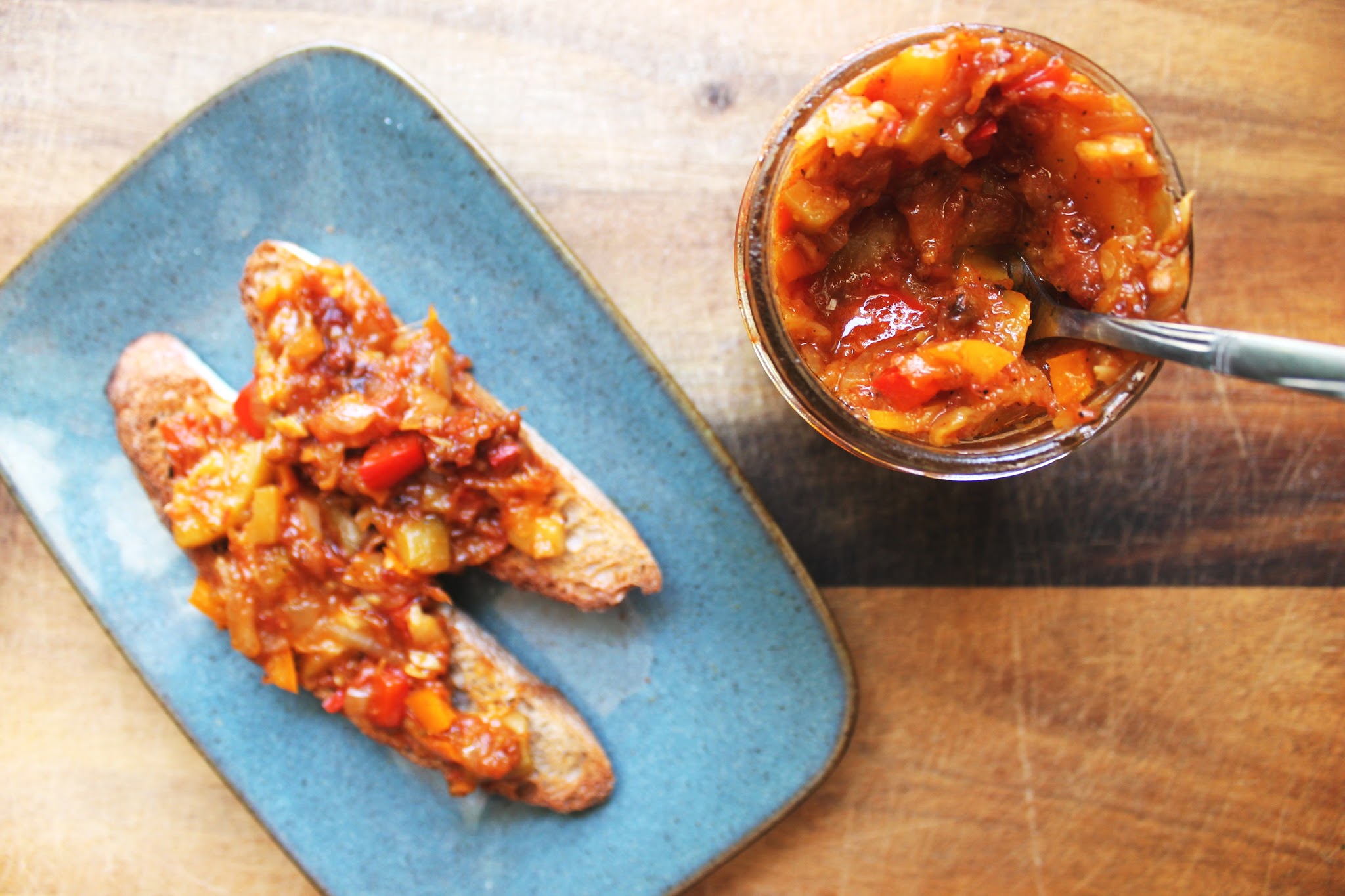 The inspiration for this recipe came from Anya von Bremzen’s culinary travelogue The New Spanish Table. While this book is by no means an exhaustive treatise on Iberian cuisine, it is basically the Spanish equivalent of Marcella Hazan’s Essentials of Classic Italian Cooking. Mind you, that is no small comparison, as it elevates the book to “culinary bible” status. Sections devoted to seafood, meats, poultry, tapas, empanadas, and even eggs, represent the cuisines of every region of Spain, from the plains to the various coastal enclaves, with particular emphasis on Catalonia and the Basque country.
The inspiration for this recipe came from Anya von Bremzen’s culinary travelogue The New Spanish Table. While this book is by no means an exhaustive treatise on Iberian cuisine, it is basically the Spanish equivalent of Marcella Hazan’s Essentials of Classic Italian Cooking. Mind you, that is no small comparison, as it elevates the book to “culinary bible” status. Sections devoted to seafood, meats, poultry, tapas, empanadas, and even eggs, represent the cuisines of every region of Spain, from the plains to the various coastal enclaves, with particular emphasis on Catalonia and the Basque country.
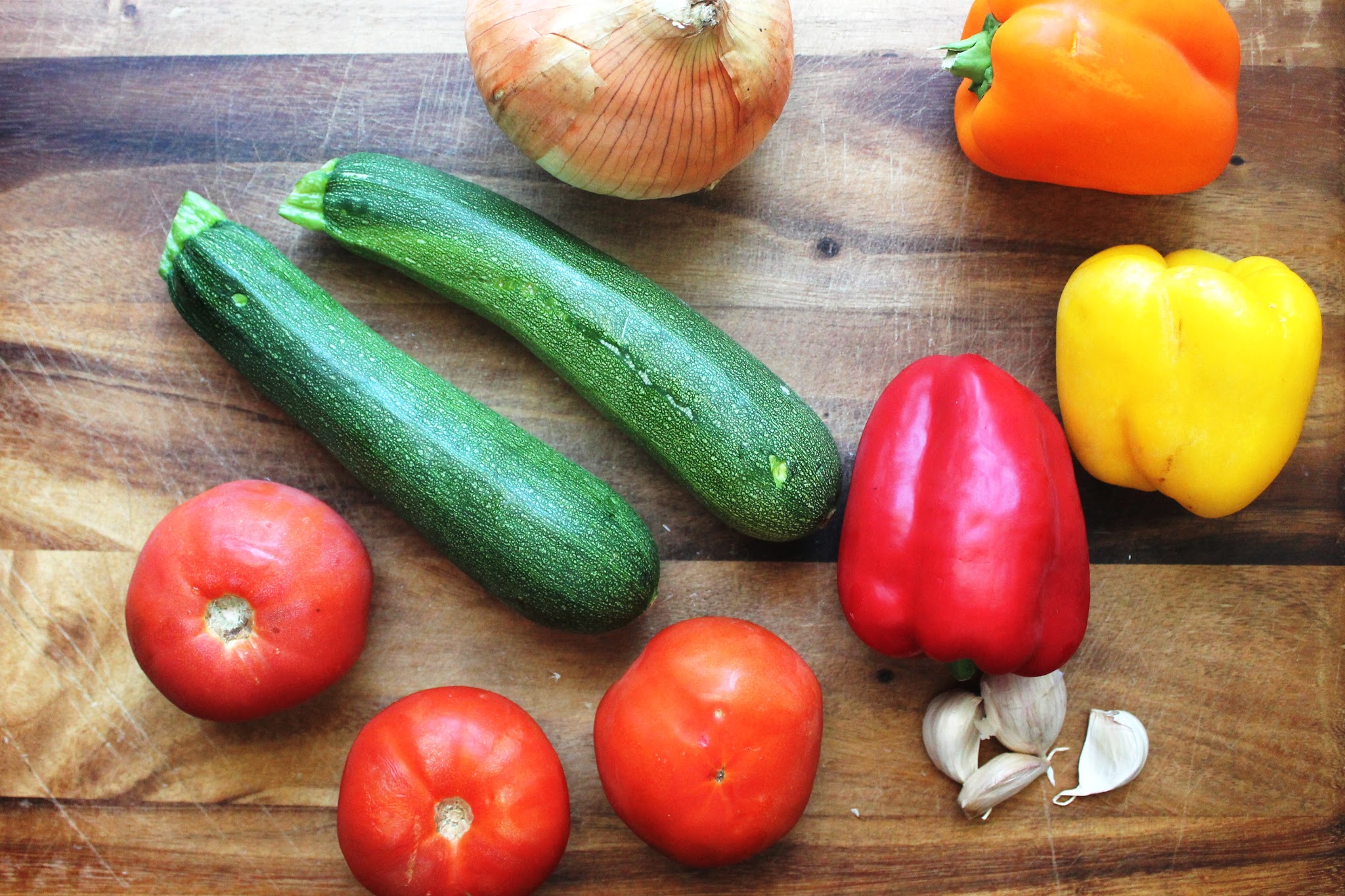 This recipe for pisto stood out for a particular reason. Think of it as the Basque equivalent of ratatouille (minus the eggplant) which can be undercooked and served as a lovely vegetable stew, or more traditionally, cooked down to a spreadable consistency. Naturally, we were instantly smitten with the idea, and knew that we had the next entry in the Savory Jam Chronicles.
This recipe for pisto stood out for a particular reason. Think of it as the Basque equivalent of ratatouille (minus the eggplant) which can be undercooked and served as a lovely vegetable stew, or more traditionally, cooked down to a spreadable consistency. Naturally, we were instantly smitten with the idea, and knew that we had the next entry in the Savory Jam Chronicles.
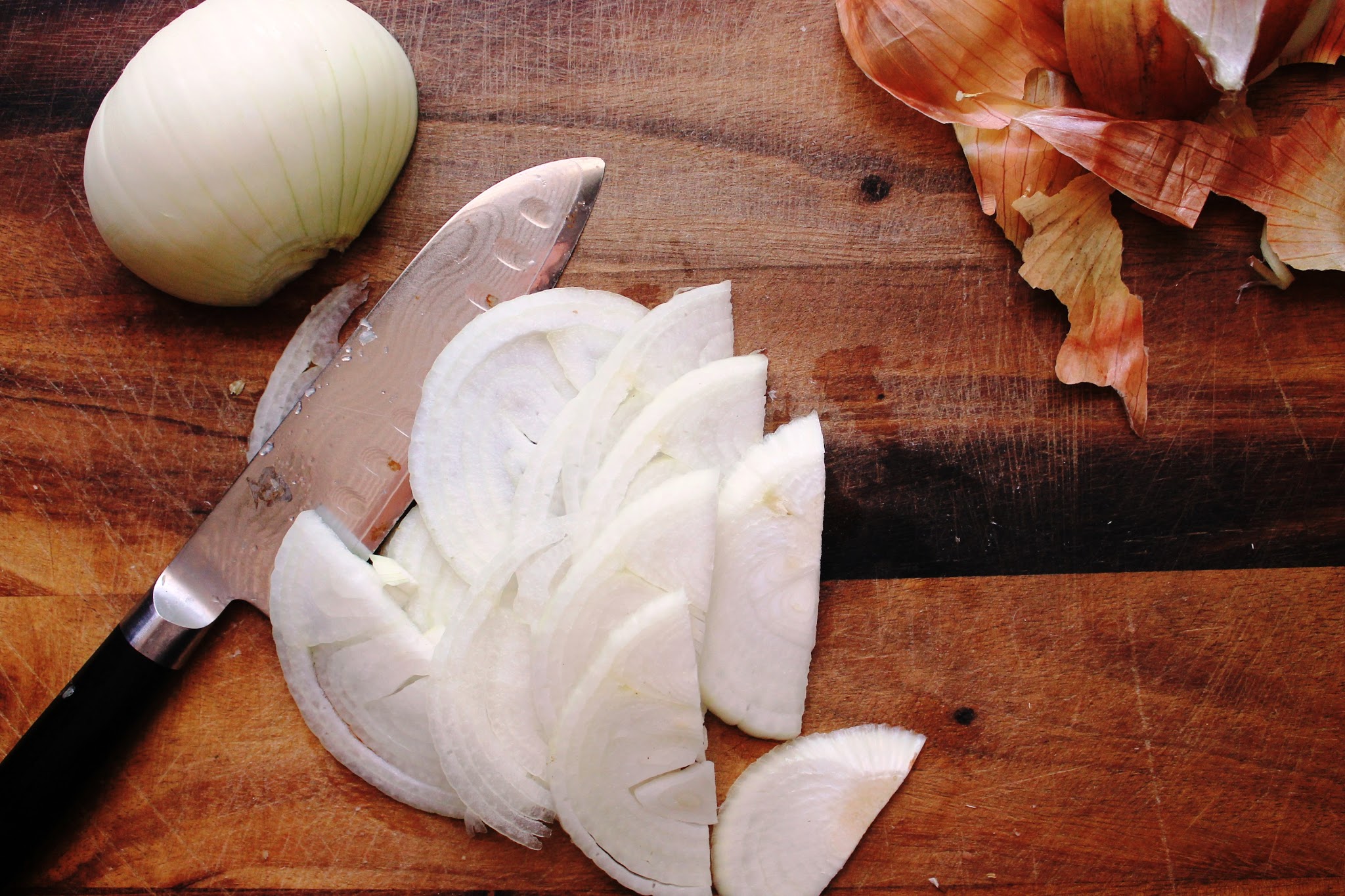
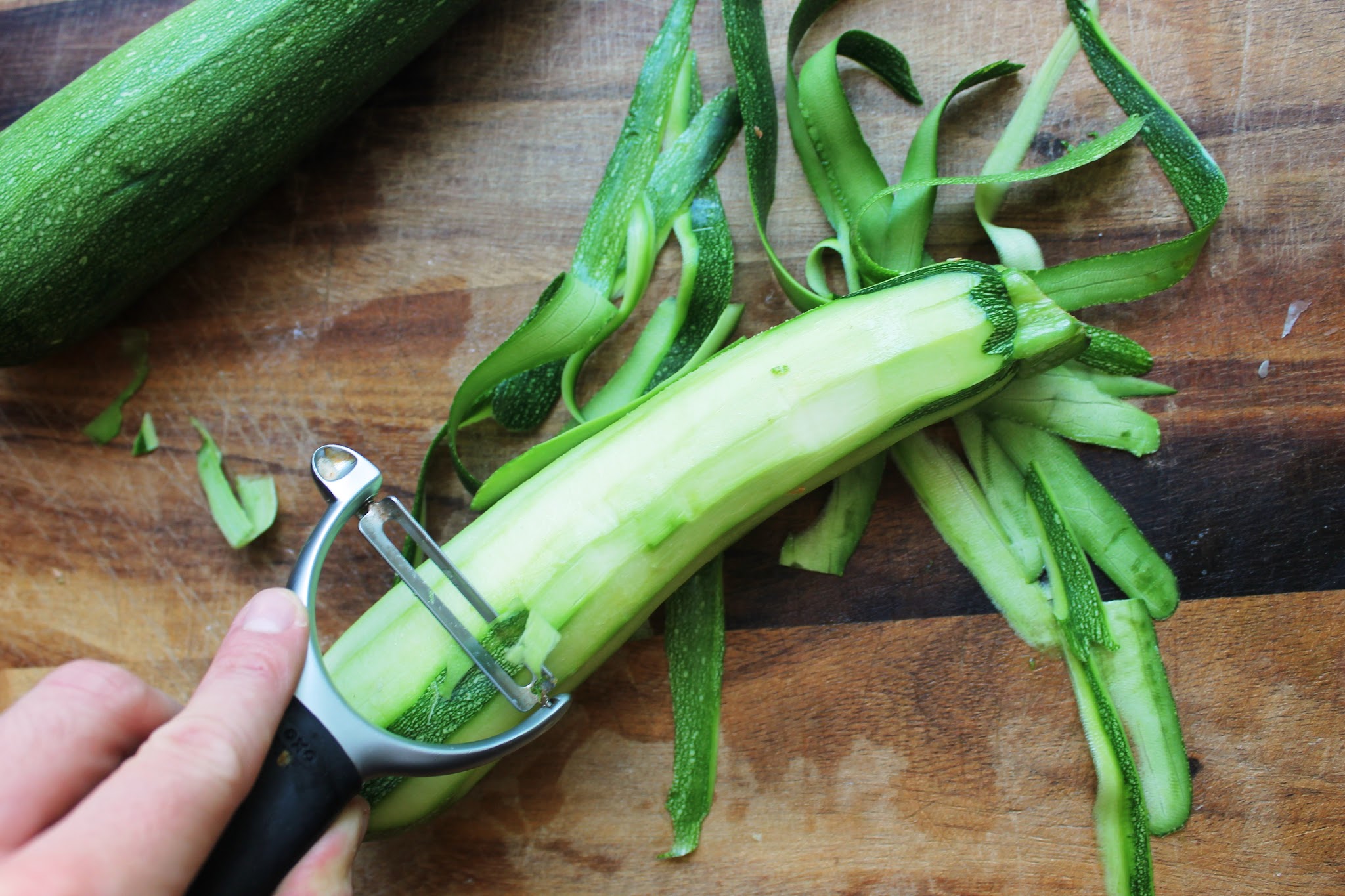 In the true spirit of adaptation there were, of course, a few tweaks to the original recipe. White wine vinegar was used in place of the red, just because it was what was on hand. Our recipe also contains a little more sugar to deepen the caramelization of the vegetables, and the cooking time was bumped up from 40 minutes to a full hour to reduce the mixture to, for lack of a better word, a “jammier” texture.
In the true spirit of adaptation there were, of course, a few tweaks to the original recipe. White wine vinegar was used in place of the red, just because it was what was on hand. Our recipe also contains a little more sugar to deepen the caramelization of the vegetables, and the cooking time was bumped up from 40 minutes to a full hour to reduce the mixture to, for lack of a better word, a “jammier” texture.
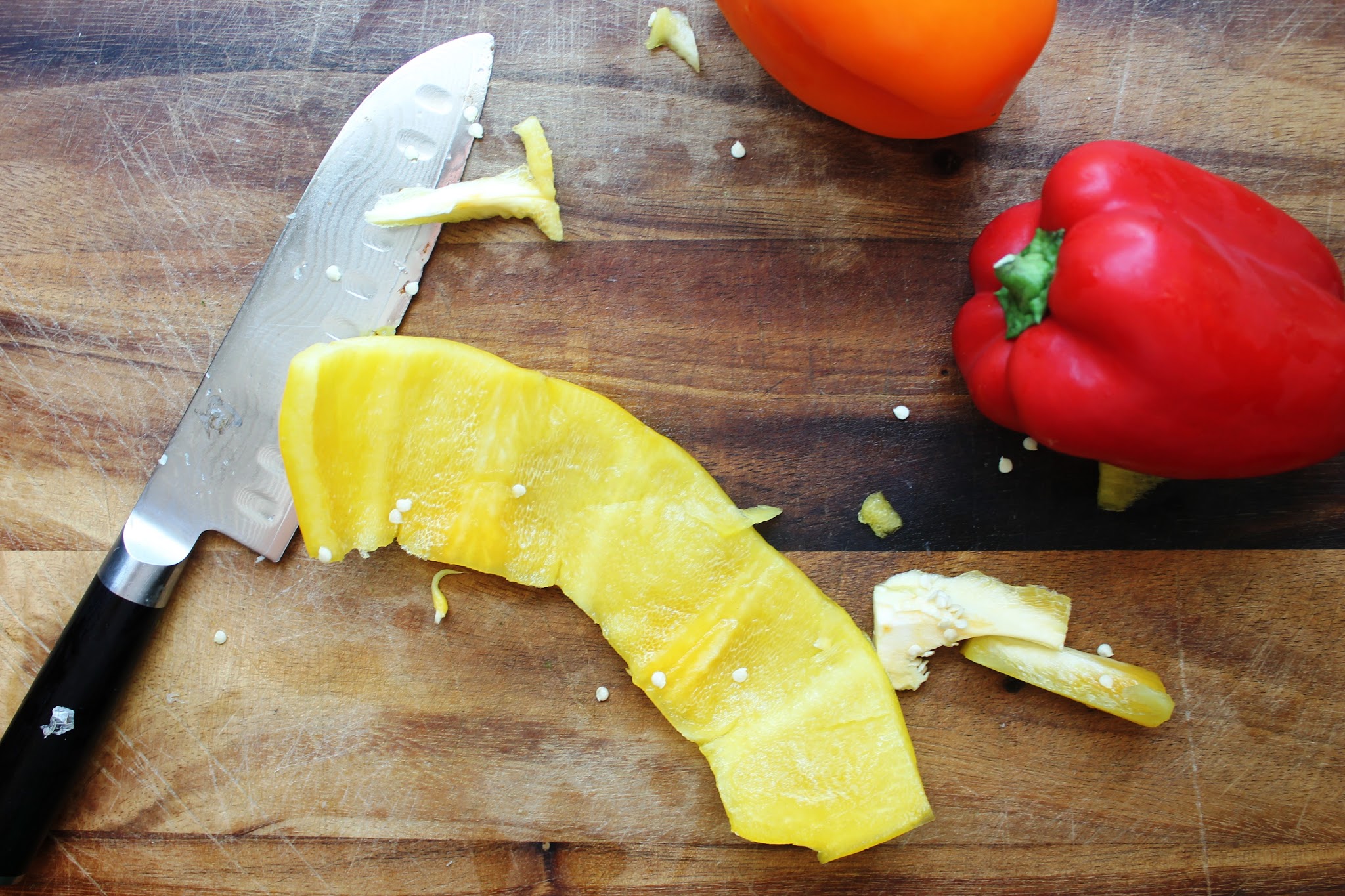
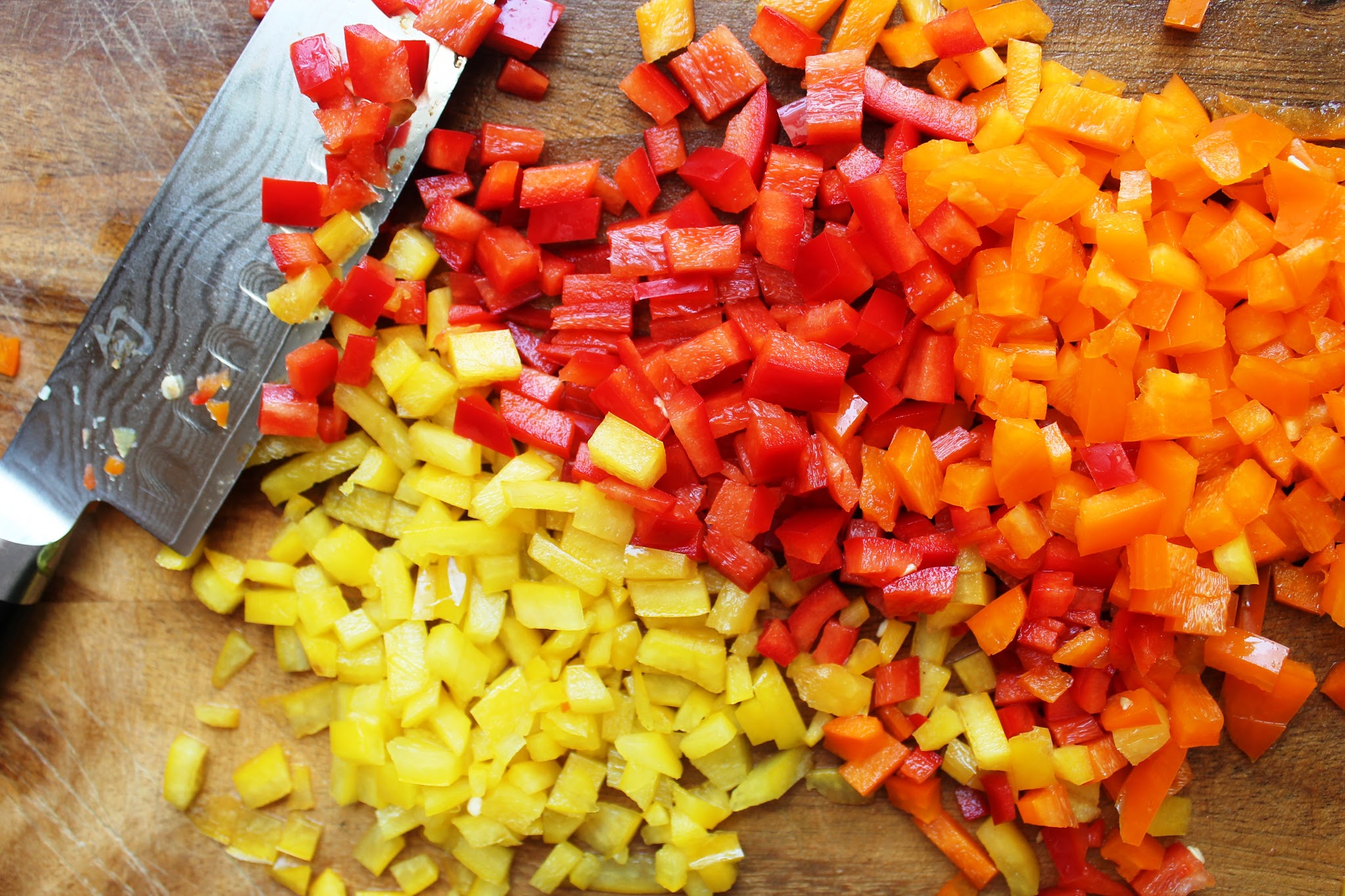 Another little change that made huge difference was to take some liberty with the peppers used in this pisto. Traditionally, you would use a mix of red and green bell peppers, and while any peppers would work beautifully, we opted for red, yellow and orange bell peppers. The taste is just as nice, but the real benefit is the color that they impart to the finished spread.
Another little change that made huge difference was to take some liberty with the peppers used in this pisto. Traditionally, you would use a mix of red and green bell peppers, and while any peppers would work beautifully, we opted for red, yellow and orange bell peppers. The taste is just as nice, but the real benefit is the color that they impart to the finished spread.
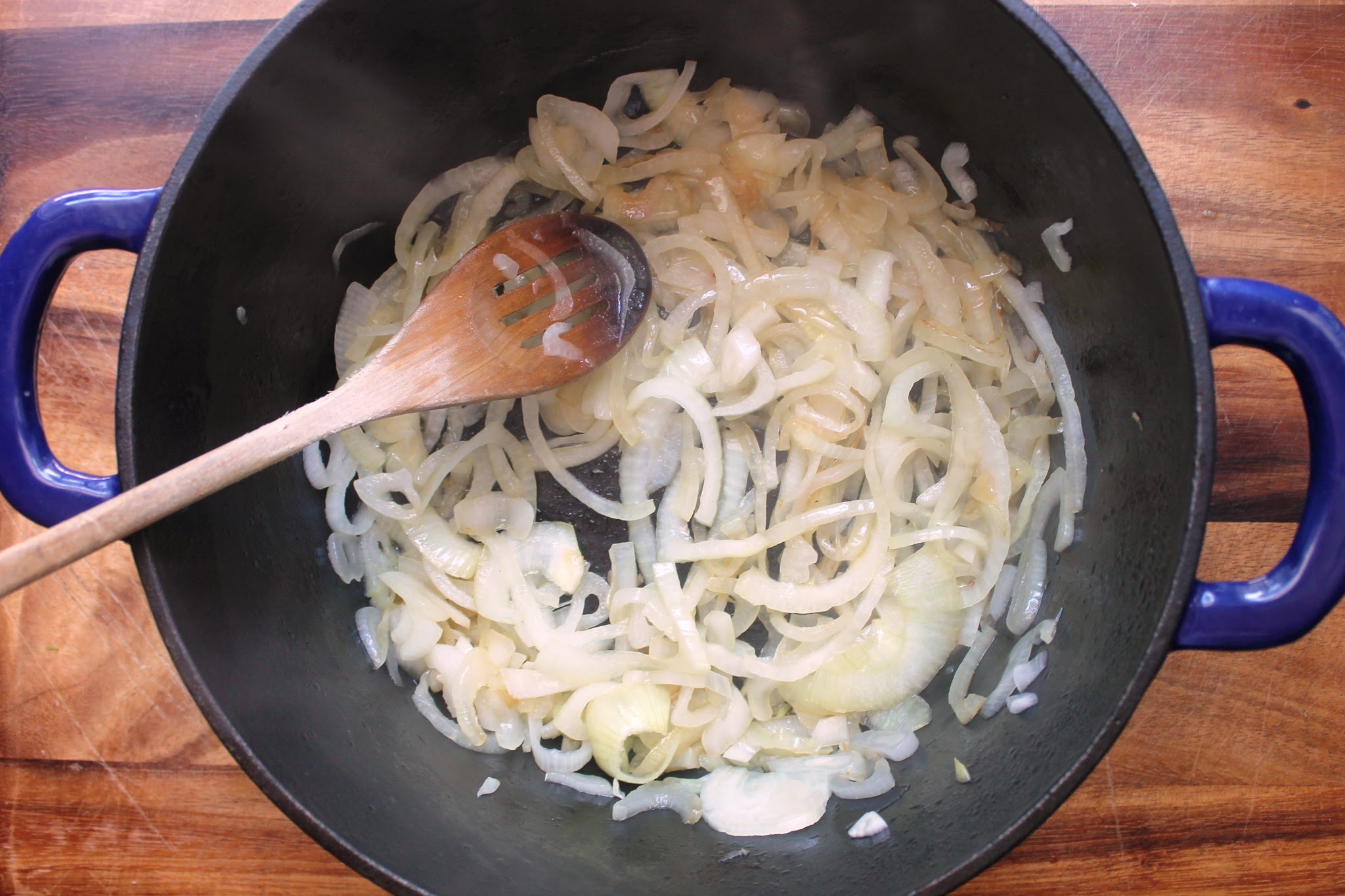
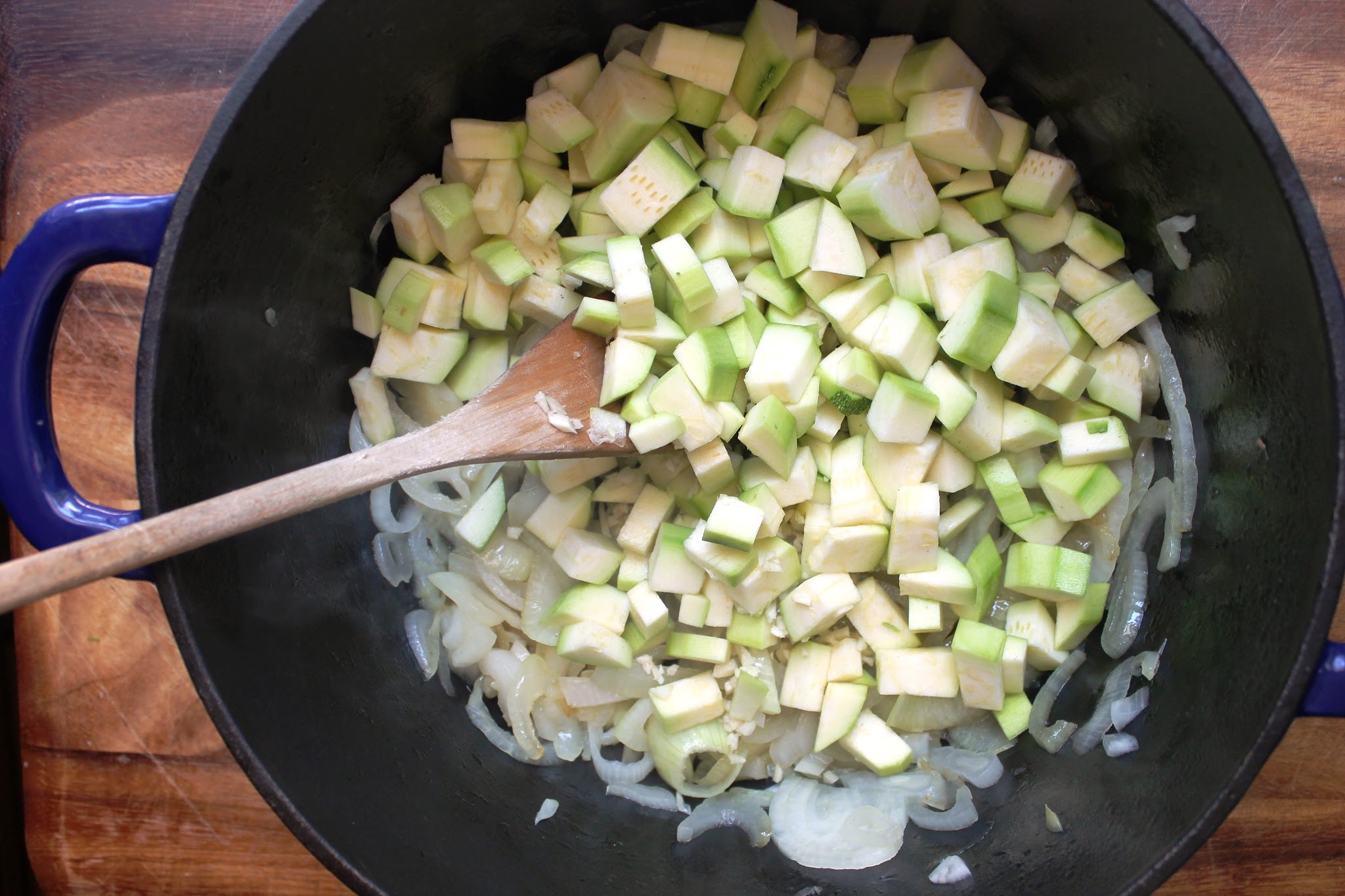 We’re used to savory jams being deeply and darkly colored, but this one is bright and beautiful, with colors as warm and lovely as its flavors. Like our other favorite savory jams—the Sun-dried Tomato, Bacon Shallot, and the Fig and Olive varieties in particular—having a jar of this on hand will get you out of any entertaining “jams” in which you might find yourself. (What? It was there and had to be said.)
We’re used to savory jams being deeply and darkly colored, but this one is bright and beautiful, with colors as warm and lovely as its flavors. Like our other favorite savory jams—the Sun-dried Tomato, Bacon Shallot, and the Fig and Olive varieties in particular—having a jar of this on hand will get you out of any entertaining “jams” in which you might find yourself. (What? It was there and had to be said.)
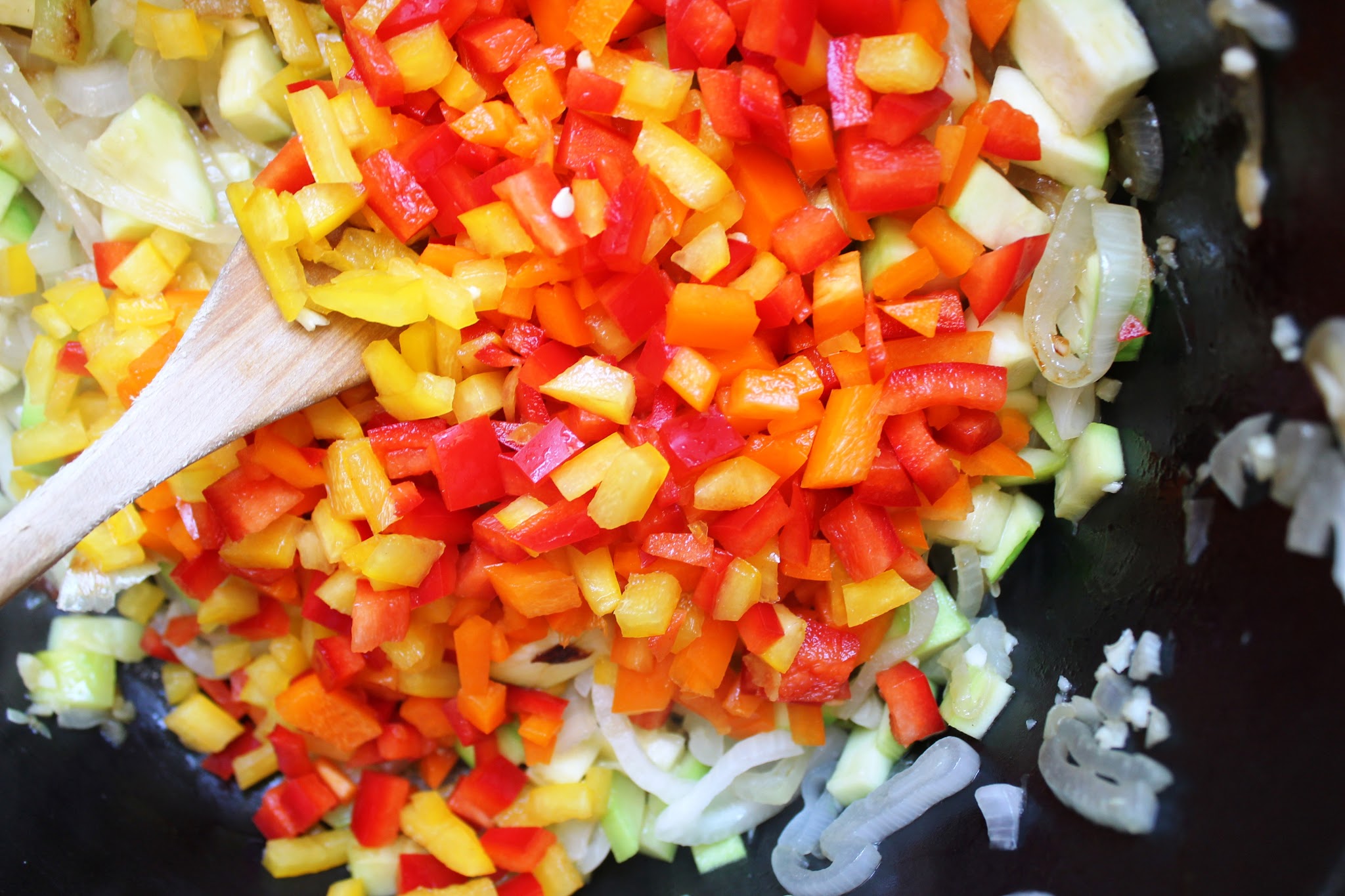
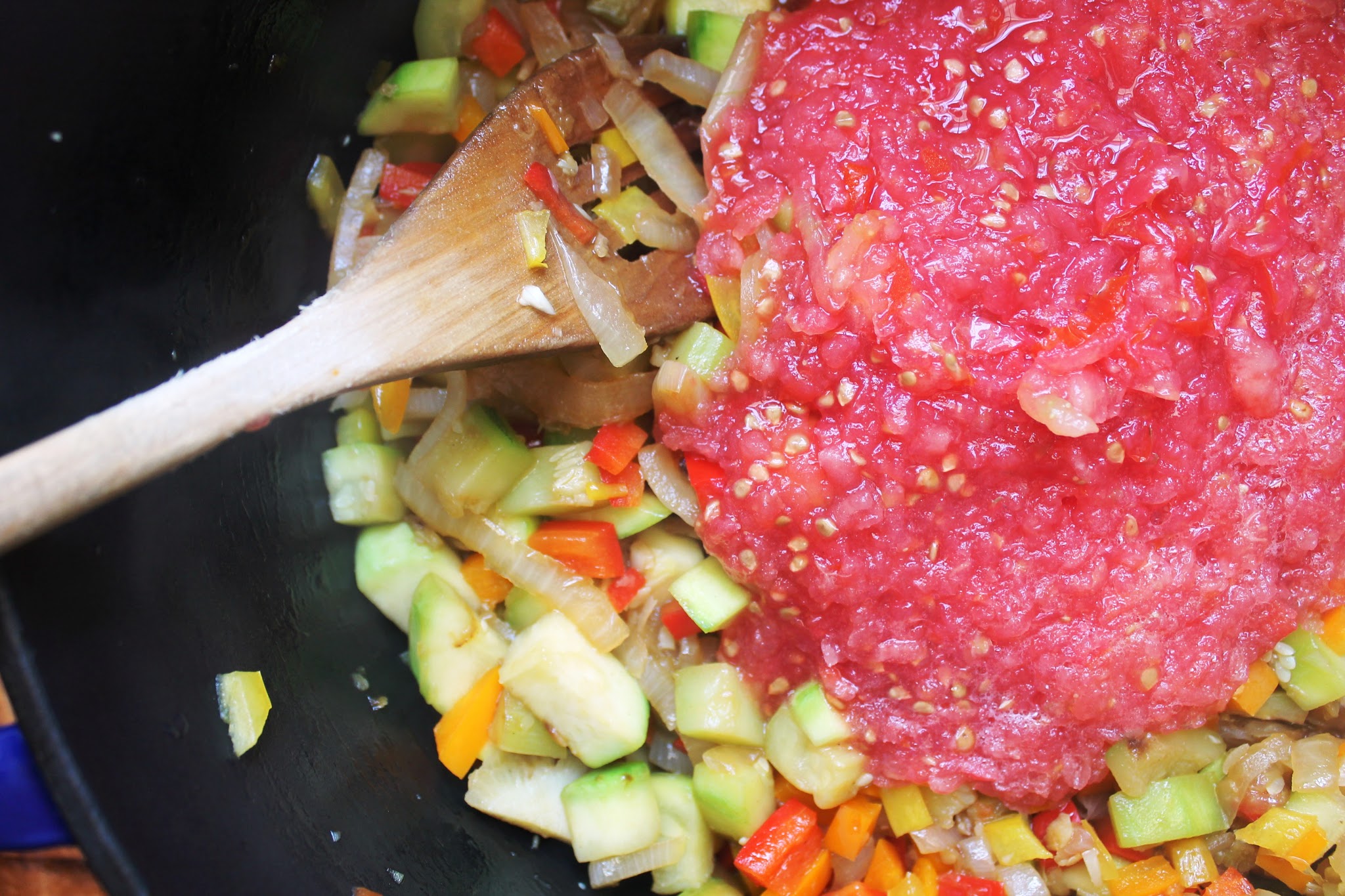 Anya von Bremzen suggests using it to enhance a wide variety of canapés, or folding it into scrambled eggs (Heaven, btw). That aside, this also makes a wonderful garnish for roasted or grilled chicken or fish, adding flavor, texture and color in one fell swoop, getting a great, visually appealing dinner on the table all the quicker.
Anya von Bremzen suggests using it to enhance a wide variety of canapés, or folding it into scrambled eggs (Heaven, btw). That aside, this also makes a wonderful garnish for roasted or grilled chicken or fish, adding flavor, texture and color in one fell swoop, getting a great, visually appealing dinner on the table all the quicker.
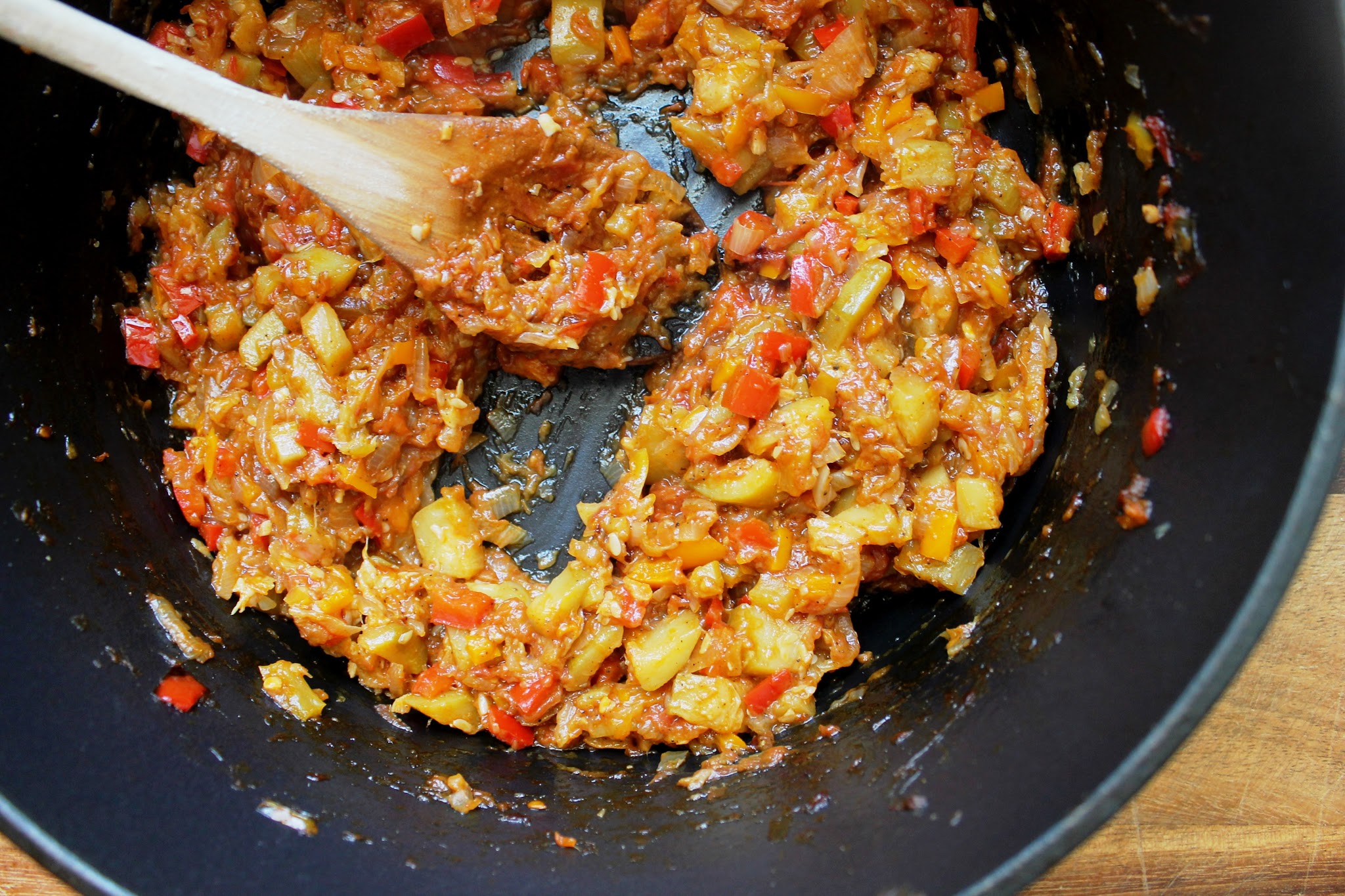 We love the old standby of serving it over gluten free crostini for a light, elegant appetizer or hors d’oeuvre. It’ll add a little drop of sunshine to any gathering. It’s also a fantastic way to preserve the bounty of wonderful summer vegetable for year round enjoyment, but good luck getting it to last into the colder months. If you manage it, let us know how it holds up. We wouldn’t know.
We love the old standby of serving it over gluten free crostini for a light, elegant appetizer or hors d’oeuvre. It’ll add a little drop of sunshine to any gathering. It’s also a fantastic way to preserve the bounty of wonderful summer vegetable for year round enjoyment, but good luck getting it to last into the colder months. If you manage it, let us know how it holds up. We wouldn’t know.
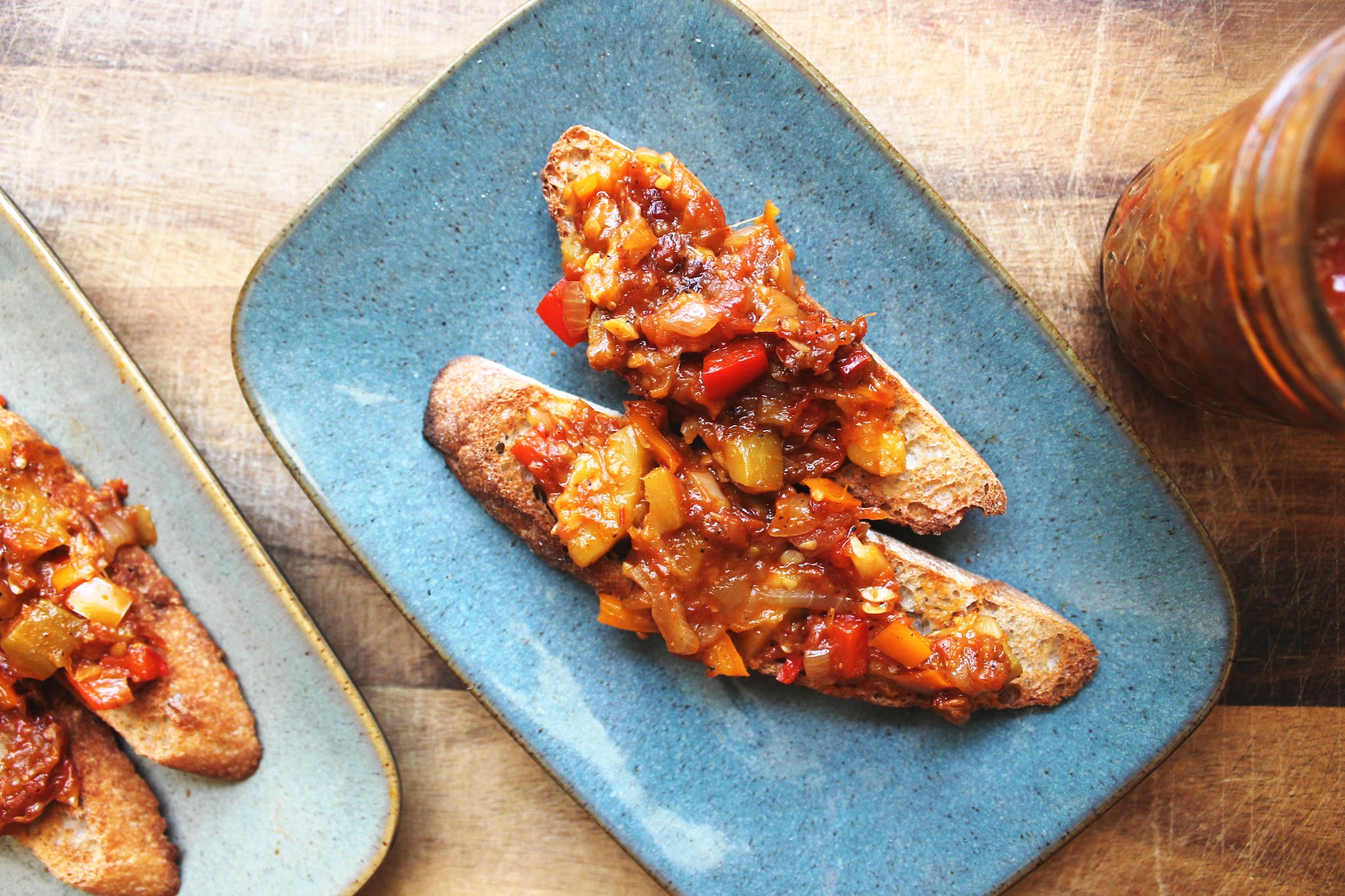
Adapted from The New Spanish Table.
- ⅓ cup extra virgin olive oil, plus more if needed
- 1 large white onion, thinly sliced
- 1 tbsp. sugar
- 2 medium zucchini, peeled and diced
- 4 garlic cloves, minced
- 3 medium bell pepper (any color), cored, seeded and diced
- 3 large ripe tomatoes, grated on a box grater, skins discarded
- 1 teaspoon white wine vinegar
- 1 teaspoon salt
- 1 teaspoon ground black pepper
- Dash red pepper flakes
- Heat the oil in a large skillet or pot over medium heat. Add the onion and sugar and cook until softened, about 7 minutes. Add the zucchini and garlic and cook, stirring frequently, until zucchini softens, about 7 - 10 minutes. Add the bell peppers and cook, stirring frequently, until peppers soften, another 7 - 10 minutes. Add a little more olive oil to the skillet/pot if the vegetables look dry.
- Add the tomatoes, reduce heat to low and cook, covered, stirring occasionally, until the vegetables are very soft and the zucchini begins to disintegrate, about 30 minutes.
- Remove the lid, increase heat to medium, and cook vegetables, stirring often, until most of the liquid has reduced, about 10 to 15 minutes. Add the vinegar, salt, black pepper and red pepper. Let the pisto cool to room temperature before serving.
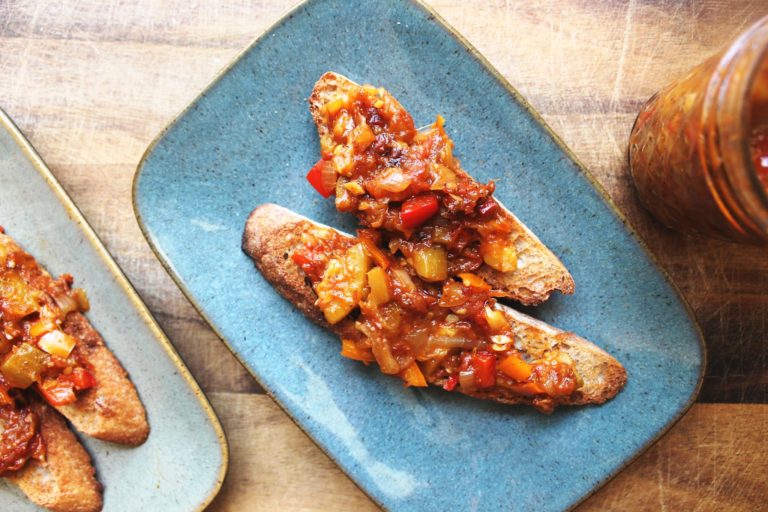

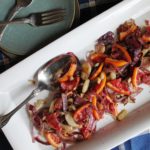




Debbie says
Is it possible to can this?
Kyle & Melissa says
Hi Debbie!
We’ve never personally canned this recipe before, but I don’t see why it wouldn’t work! If you give it a shot, please let us know how it turns out!
Enjoy!